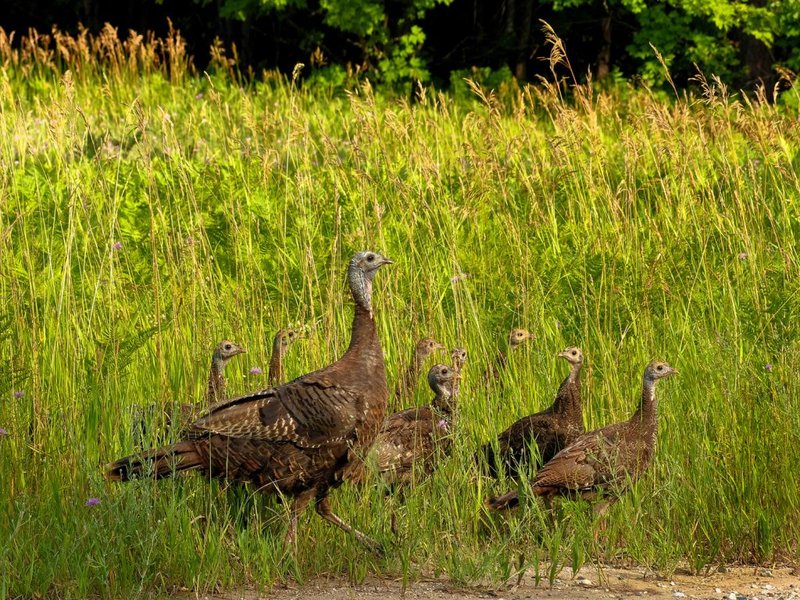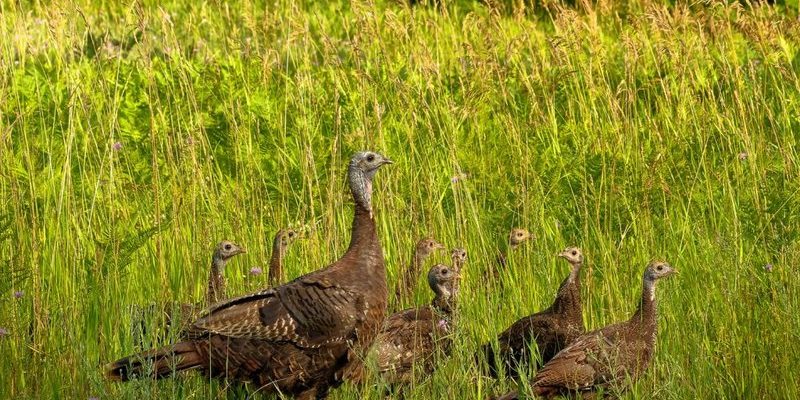
Imagine living in a bustling city where the trees are slowly disappearing, and the air is becoming thick with pollution. The same can be said for the habitats that wild turkeys call home. Luckily, many organizations and individuals are stepping up to protect these environments and the turkeys that inhabit them. In this article, we’ll delve into the various conservation efforts aimed at safeguarding turkeys, highlighting the importance of habitat restoration, community engagement, and sustainable practices.
The Importance of Wild Turkeys in Our Ecosystem
Wild turkeys aren’t just a seasonal sight; they play a crucial role in maintaining ecological balance. These birds are omnivores, which means they consume a blend of plants and animals. Their diet consists of seeds, fruits, insects, and even small reptiles. By foraging for food, turkeys help disperse seeds and control insect populations, contributing to the overall health of their habitats.
You might be wondering why this matters. When turkey populations decline, the effects ripple through the ecosystem. For instance, fewer turkeys mean there are fewer seed distributors, which can hinder plant growth. This decline can lead to reduced food supplies for other animals, creating a chain reaction that disrupts the entire food web.
Moreover, turkeys are considered a species of concern because of their adaptability. They can thrive in various environments, making them indicators of ecosystem health. Their presence signifies that habitats are well-managed, and when they flourish, it’s a positive sign for biodiversity.
Key Conservation Organizations Focused on Turkeys
Several dedicated organizations are on a mission to protect wild turkeys and their habitats. Groups like the National Wild Turkey Federation (NWTF) play a significant role in conservation efforts. The NWTF’s initiatives focus on habitat restoration, advocacy for sustainable hunting, and community education about the importance of turkeys in our ecosystem.
Another noteworthy organization is American Bird Conservancy (ABC), which works to protect birds across the Americas, including turkeys. They emphasize creating and preserving habitats and promoting conservation policies that benefit these birds.
These organizations don’t work alone. They often partner with local communities, government agencies, and wildlife biologists to create strategies that address the specific needs of turkey populations. Through their combined efforts, they’re creating a more sustainable future for these birds.
Habitat Restoration Initiatives
One of the most effective ways to protect turkeys is through habitat restoration. This involves restoring forests, grasslands, and wetlands to ensure turkeys have a safe place to live and thrive. Restoration projects often focus on replanting native vegetation and removing invasive species that threaten turkey habitats.
Here’s an example: Imagine a once-thriving forest turning into a barren landscape due to deforestation. Habitat restoration reintroduces plant species that turkeys rely on for food and shelter. It’s like refurbishing a home—remodeling it to make it comfortable and welcoming again.
In addition to replanting efforts, many organizations conduct controlled burns to rejuvenate habitats. This method helps maintain healthy ecosystems by preventing overgrowth and allowing new plants to sprout. It’s a delicate balance, but it’s essential for ensuring turkeys have the space they need to thrive.
Sustainable Hunting Practices and Regulations
Hunting has always been a part of turkey culture, but sustainable hunting practices are essential to maintaining healthy populations. Organizations like the NWTF advocate for responsible hunting tactics that balance the needs of wildlife and hunters. They often work with state wildlife agencies to set regulations that ensure hunters don’t overharvest turkey populations.
For instance, creating designated hunting seasons allows turkey populations to regenerate. Additionally, the NWTF promotes education around identifying sustainable hunting practices, such as using proper equipment and adhering to bag limits. This way, hunters can enjoy their sport without jeopardizing turkey populations.
Here’s the thing: when hunters respect wildlife regulations, it benefits everyone. Healthy turkey populations mean thriving ecosystems, which, in turn, provide better hunting experiences. It’s a win-win scenario.
Community Involvement and Education Efforts
Community engagement is vital in conservation efforts for turkeys. Local communities play a crucial role in habitat protection, and there are numerous programs aimed at educating the public about the significance of turkeys and how to protect them.
Many organizations host workshops, school programs, and volunteer events to involve community members in conservation efforts. These initiatives help raise awareness about the importance of turkeys and educate people on how they can contribute. For example, participating in a habitat clean-up day isn’t just a fun outing; it helps preserve the very homes that turkeys rely on.
When people are educated and involved, they become stewards of the environment. They’re more likely to create sustainable practices in their daily lives and advocate for policies that benefit wildlife. This grassroots movement is vital for the long-term protection of turkeys.
The Role of Technology in Conservation
In recent years, technology has played a significant role in conservation efforts. Tools like GPS tracking devices and remote cameras help researchers monitor turkey populations and their behaviors. By understanding their habits, conservationists can make more informed decisions about habitat restoration and management.
For instance, GPS tracking allows scientists to study turkey migration patterns. This data can help identify critical habitats that need protection. If researchers notice that turkeys are avoiding certain areas, it’s an indication that those habitats may be under threat and need attention.
Moreover, technology can aid in community education. Virtual tours and online engagement platforms allow people from all over the world to connect with conservation efforts. You might find a virtual workshop on sustainable hunting practices that you can attend from the comfort of your home, making it easier than ever to get involved.
Future Steps for Turkey Conservation
As we look to the future, the conservation of turkeys remains a pressing issue. It’s essential to continue fostering partnerships between organizations, government agencies, and local communities. Together, we can create a comprehensive approach to protecting these birds and their habitats.
Continuous monitoring and research are vital in understanding how turkeys adapt to changing environments. By investing in long-term studies, we can stay ahead of potential challenges, ensuring that turkey populations remain stable.
Moreover, raising awareness about the importance of turkeys can inspire more people to take action. The more people know about the unique role turkeys play in our ecosystems, the more likely they are to engage in conservation efforts themselves.
In conclusion, protecting wild turkeys isn’t just about saving a bird; it’s about preserving our ecosystems and ensuring a balanced environment for future generations. Through habitat restoration, sustainable hunting practices, community engagement, and technological advancements, we can make a meaningful impact. Let’s rally together to safeguard these remarkable creatures and the places they call home. After all, every little effort counts in the grand scheme of conservation.

